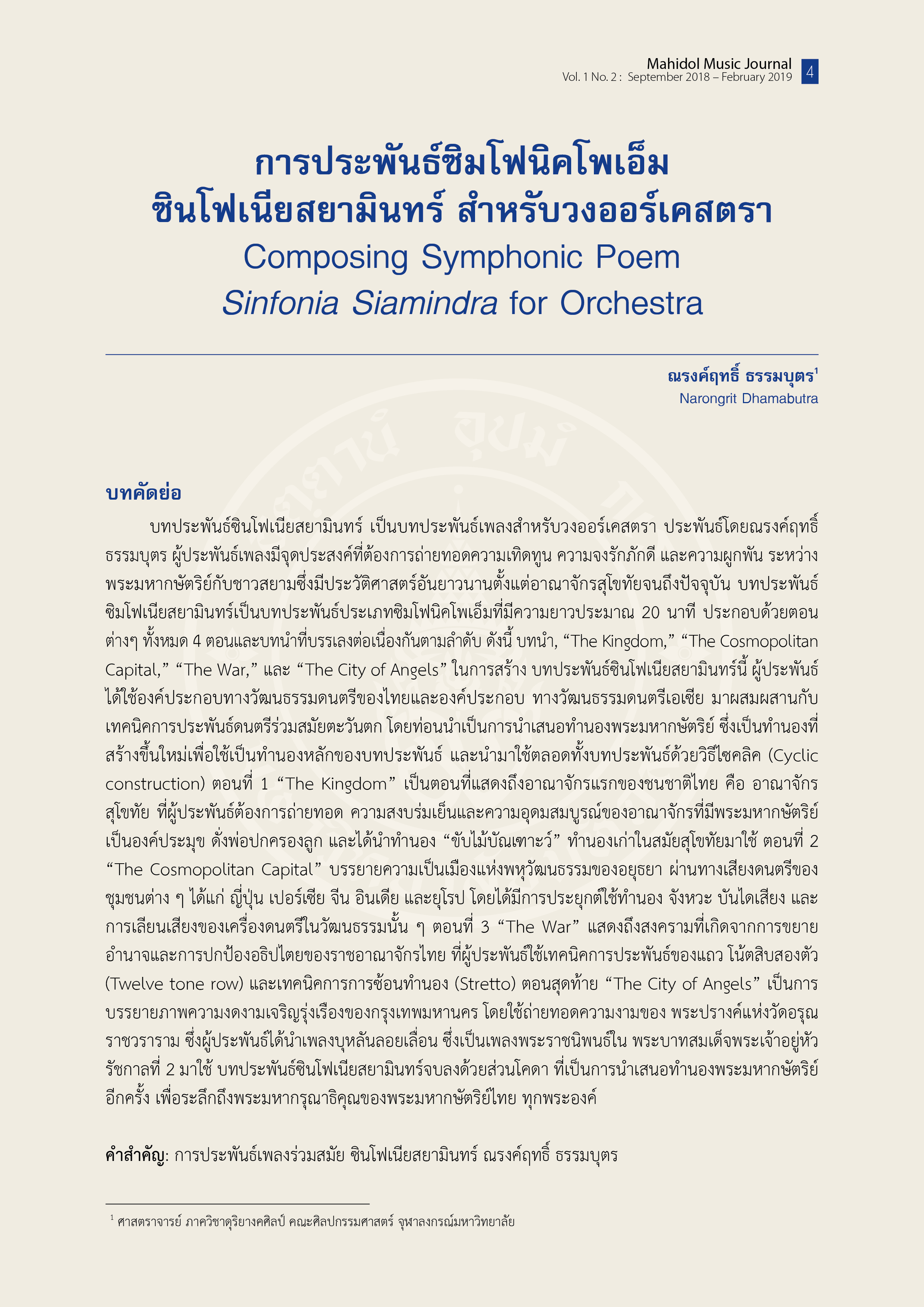Composing Symphonic Poem Sinfonia Siamindra for Orchestra
Keywords:
contemporary composition, Sinfonia Siamindra, Narongrit DhamabutraAbstract
The Sinfonia Siamindra, a composition by Narongrit Damabutra, is a symphonic poem composed for the purpose of expressing the love, loyalty, and reverence of Siamese king and his people. The 20-minute composition is set in a four sections comprised of an introduction, “The Kingdom,” “The Cosmopolitan Capital,” “The War,” and “The City of Angels.” Musical materials of both Thai and Asian cultures are integrated with contemporary composition techniques to convey the long history of the Thai nation from Sukhothai to Rattanakosin. The introduction displays the main theme of the King that is enhanced throughout the composition through cyclical construction. The first section, “The Kingdom,” depicts the kingdom of Sukhothai where serenity and glory was magnified by the great kings who ruled the kingdom as a father-figure to their people. The ancient tune of the period, “Khab mai ban-dau,” recalls the image and atmosphere of the kingdom. The second section, “The Cosmopolitan Capital,” describes the inter-cultural communities of many foreigners residing in Ayutthaya: the Japanese, Persian, Chinese, Indian, and European. Musical materials of each culture including modes, rhythms, melodies, and instruments are modified through contemporary composition techniques to present the sound of the particular cultures. The section titled, “The War,” reveals the scene of the battlefield where the kings and their people protect the sovereignty of the nation. In this section, the techniques of twelve-tone row and stretto are imputed to array the austerity of unceasing war. Finally, “The City of Angels,” represents the capital city of Thailand, “Bangkok.” Here the glamorous image of Wat Arun, a temple lying on the bank of Chaopraya river, is illustrated through the lyrical melody, “Bulan loi-luean,” a composition of King Rama II. Sinfonia Siamindra concludes with the return of the main theme of the Kings.

Downloads
Published
How to Cite
Issue
Section
License

This work is licensed under a Creative Commons Attribution-NonCommercial-NoDerivatives 4.0 International License.
The copyright of the article belongs to the author. Published articles represent the views of the authors. The editorial team neither necessarily agree with nor take any responsibility for the article.





